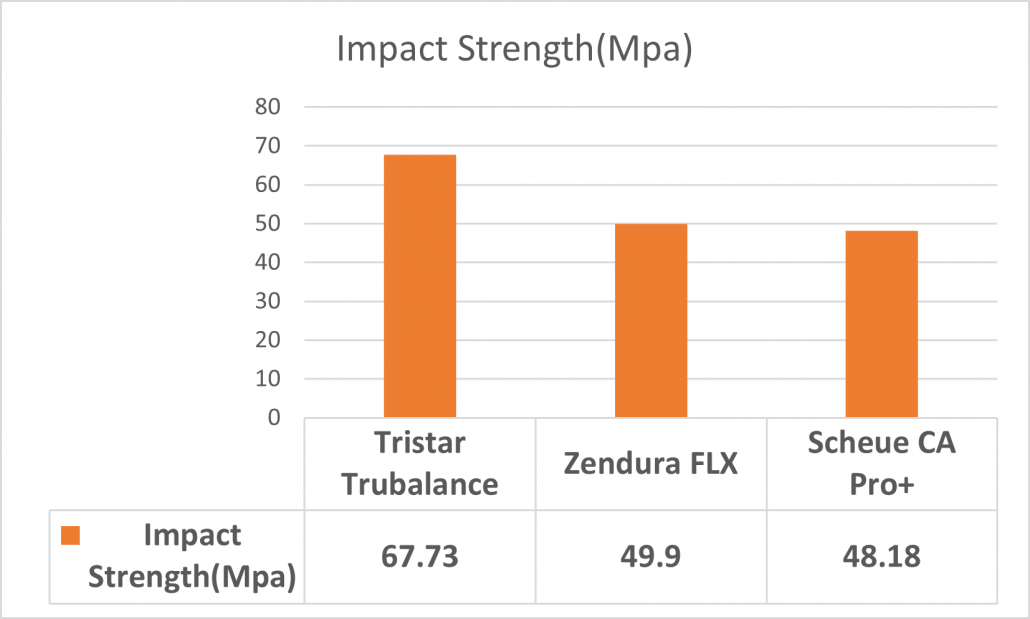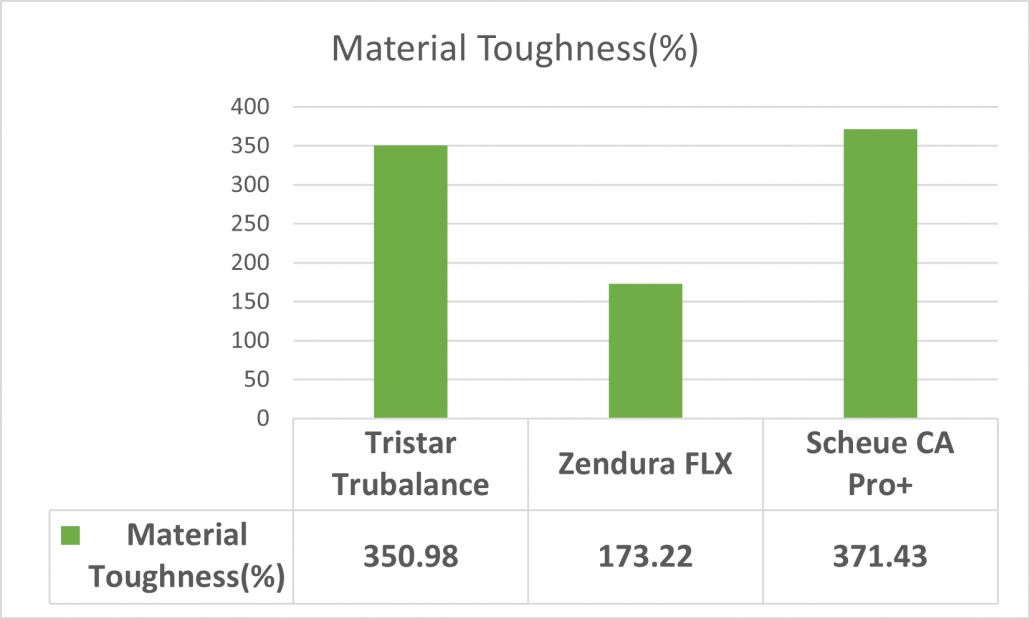Important techinical properties for clear aligners
Impact strength
The impact strength of the aligner sheet is a measure of its capability to resist a sudden applied load or force for example, chewing forces which craze or crack the aligner sheet.
Stress retention
Stress retention measures how the aligner sheet reacts when continuous pressure is applied during a period of time
Stress relaxation
Stress relaxation measures the aligner material’s performance when subjected to prolonged constant strain over a period of time
Material toughness
The ability of the aligner sheet to absorb energy and plastically deform without fracturing
Stain resistance
The ability of the aligner sheet to endure itself from staining content from typical diets for a specific period of time, eg red wine/coffee/ tea.
Tristar Technical Test
Impact Strength
The Tristar aligner sheet has been engineered to be crack resistant against biting forces intraorally. Tristar was assessed as the highest for its “impact strength” compare to other orthodontic materials.
Stress Retention
Stress retention explains how materials act when exposed to continuous pressure during a period of time. Put simply when materials are pressed, hit or pull on the substance for long enough what will happen? Would it crack, twist or slowly give back?
Over a 10 day period of simulated application, the clear aligner material can maintain up to 90% of the original force design. Low, continuous force delivery for predictable treatment results compared to off the shelf, single layered materials.
Stress retention is provided by means of stress versus time. See the graph below.
Stress Relaxation
Low stress relief is an important performance criterion for aligners. The role of the aligner is to apply specific stress to the tooth that guides the tooth to the ideal position over time. This means that the teeth are putting force right back on the retainer. Therefore, retainers with low stress relief better ensure that the teeth move instead of deforming the retainer material.
When the aligner is applied to the patient’s teeth, a load (or stress) is usually applied at a predetermined stress-strain level. From that moment on, the aligner begins to move its teeth, but at the same time, it gradually loses or relaxes some of the stress applied. Gradually, the aligner loses the ability to apply the force required to keep moving the teeth, so it needs to be replaced with a new set of devices.
Therefore, in order to design an effective aligner that can move teeth within a short time and a certain distance, it is important to understand the stress relief characteristics of various plastics.
Tristar shown low stress relief during the test due to high-end materials.
Material Toughness
The Tristar sheet is able to stretch to almost three and a half times it’s original dimension before breaking.
Stain Resistance
Dental appliances are frequently exposed to severe colourants (e.g., coffee, tea, and mouthwash) when worn by patients, causing the plastic to turn yellow or even deteriorate structurally.
Tests have been performed to determine the resistance to stains was to soak the aligner into wine/boiled water/coffee and leave them in an oven at 37°C for 8 hours. Increasing the temperature during soaking accelerates almost all processes governed by molecular mechanics. In other words, diffusion or staining occurs much faster at 37°C than at room temperature.
These test results have made Tristar confident that it is the best material available for various types of dental devices and will help you ensure that it is worth trying at clinics.
In short, Tristar has higher chemical resistance to common colourants such as coffee, tea, oil, toothpaste, mustard, etc. than other materials.
| Product | Stain resistance in lipophilic | Stain resistance in hydrophilic solvents |
|---|---|---|
| Tristar Trubalnce | ♥♥♥♥♥ | ♥♥♥♥ |
| Zendura FLX | ♥♥♥♥ | ♥♥♥♥♥ |
| Essix C+ | ♥ | ♥♥♥ |
| Biocryl | ♥♥♥ | ♥♥ |
| DuraClear | ♥♥ | ♥♥♥ |



